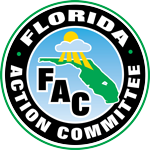Who knew it? Online services can block illegal images.
This article from Business Insider reports that Google is going to use a database of “digital fingerprints” of online images of child pornography to block the content from view by it’s users. They are encouraging other online services and browsers to do the same.
Really?!? Don’t you think this should be a priority?!? If technology exists to block the transmission of illegal files online wouldn’t you think that the billions of dollars being spent by law enforcement on sex offenders should be re-prioritized?
It’s like standing around watching someone get punched in the face just so you can arrest the assailant. Wouldn’t it be better for the guy who got punched if they did something to stop it?!?
Proponents of harsh sentences for child pornography offenses claim that each time an image is viewed it re-victimizes the individual in the image. By having the tools to prevent something and failing to use them (or insist on their use), are we not facilitating the perpetuation of child pornography unnecessarily? I get that law enforcement jobs depend on a continued supply of lawbreakers. I understand that the prison system is big business. Then there’s supervision and probation, treatment providers, monitoring services…
A lot of money is at stake if we cut off the supply of illegal images, but on the flip side shouldn’t we think of the victims?
Discover more from Florida Action Committee
Subscribe to get the latest posts sent to your email.

I would suggest reading what happen when it was tried before. http://en.wikipedia.org/wiki/Ashcroft_v._Free_Speech_Coalition The technology exist but so does the key words used to promote those sites. In the case outlined above: Children as young as 4 were seeing images of child porn. But the schools adults and medical groups were being blocked by use of tagged words.
Image tags will only work if the person who creates them tag them. Third party tagging using written words such as penis or breast. block medical students and doctors from web site that dealt with those parts of the anatomy
So who will be hurt. The 4 years in the case typed words like cat, but, girl, boy and over 200 pop ups went on to the computer the restriction was set to moderate. But in order for the doctor to get his research he had to turn off the filter. So use of filters will never work unless it comes from the source of the images.
Google supplies services to protect your account from accepting and or receiving any questionable or illegal materials. How this works is you log into into your Google Account using your gmail and password. Go to setup preferences: Scroll down to find Public or Private. You can now switch between making your account accessable. Now scroll until find age limit. You can adjust this setting. You can setup at Adults only can only access the account. So now if your preferences are only your Friends and Collegues that can visit your Google page plus they must be Adults to do so, that is a great start in the prevention of any unwanted Materials filtering into your account from Unknown users. All of us have had major issues with Phishing and Scams coming into our Google accounts. So before you accept Google terms make darn sure you know their policies and limitations. JEV
The “digital fingerprints” tool, though I don’t know if it’s the identical one that Google is using, has been around for quite some time. It’s a standard tool in forensic investigation of a computer.
Are you proposing that services such as Google simply block prohibited images and not report them? I’m no lawyer, but I don’t know if legally they have that option.